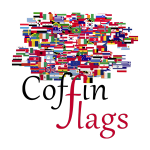Description
 Venezuela, officially the Bolivarian Republic of Venezuela, is a country on the northern coast of South America, consisting of a continental landmass and many small islands and islets in the Caribbean Sea. It has a territorial extension of 916,445 km2 (353,841 sq mi). The continental territory is bordered on the north by the Caribbean Sea and the Atlantic Ocean, on the west by Colombia, Brazil on the south, Trinidad and Tobago to the northeast and on the east by Guyana. The Venezuelan government maintains a claim against Guyana to Guayana Esequiba, an area of 159,542 km2 (61,600 sq mi). For its maritime areas, Venezuela exercises sovereignty over 71,295 km2 (27,527 sq mi) of territorial waters, 22,224 km2 (8,581 sq mi) in its contiguous zone, 471,507 km2 (182,050 sq mi) of the Caribbean Sea and the Atlantic Ocean under the concept of exclusive economic zone, and 99,889 km2 (38,567 sq mi) of continental shelf. This marine area borders those of 13 states. The capital and largest urban agglomeration is the city of Caracas. The country has extremely high biodiversity and is ranked seventh in the world’s list of nations with the most number of species. There are habitats ranging from the Andes Mountains in the west to the Amazon basin rain-forest in the south via extensive llanos plains, the Caribbean coast and the Orinoco River Delta in the east.
Venezuela, officially the Bolivarian Republic of Venezuela, is a country on the northern coast of South America, consisting of a continental landmass and many small islands and islets in the Caribbean Sea. It has a territorial extension of 916,445 km2 (353,841 sq mi). The continental territory is bordered on the north by the Caribbean Sea and the Atlantic Ocean, on the west by Colombia, Brazil on the south, Trinidad and Tobago to the northeast and on the east by Guyana. The Venezuelan government maintains a claim against Guyana to Guayana Esequiba, an area of 159,542 km2 (61,600 sq mi). For its maritime areas, Venezuela exercises sovereignty over 71,295 km2 (27,527 sq mi) of territorial waters, 22,224 km2 (8,581 sq mi) in its contiguous zone, 471,507 km2 (182,050 sq mi) of the Caribbean Sea and the Atlantic Ocean under the concept of exclusive economic zone, and 99,889 km2 (38,567 sq mi) of continental shelf. This marine area borders those of 13 states. The capital and largest urban agglomeration is the city of Caracas. The country has extremely high biodiversity and is ranked seventh in the world’s list of nations with the most number of species. There are habitats ranging from the Andes Mountains in the west to the Amazon basin rain-forest in the south via extensive llanos plains, the Caribbean coast and the Orinoco River Delta in the east.
The current eight-star flag of Venezuela was introduced in 2006. The basic design includes a horizontal tricolour of yellow, blue, and red, dating to the original flag introduced in 1811, in the Venezuelan War of Independence. According to the current interpretation, the colours signify; Yellow: Represents the riches of the country, the wealth of Venezuelan soil, gold, sovereignty, harmony, justice and agriculture, as well as the Sun, the source of Light. Blue: represents the Sea of the Caribbean that surrounds the country, as well as the Venezuelan beaches. Red: represents the spilled blood in the battle for independence from Spain.







